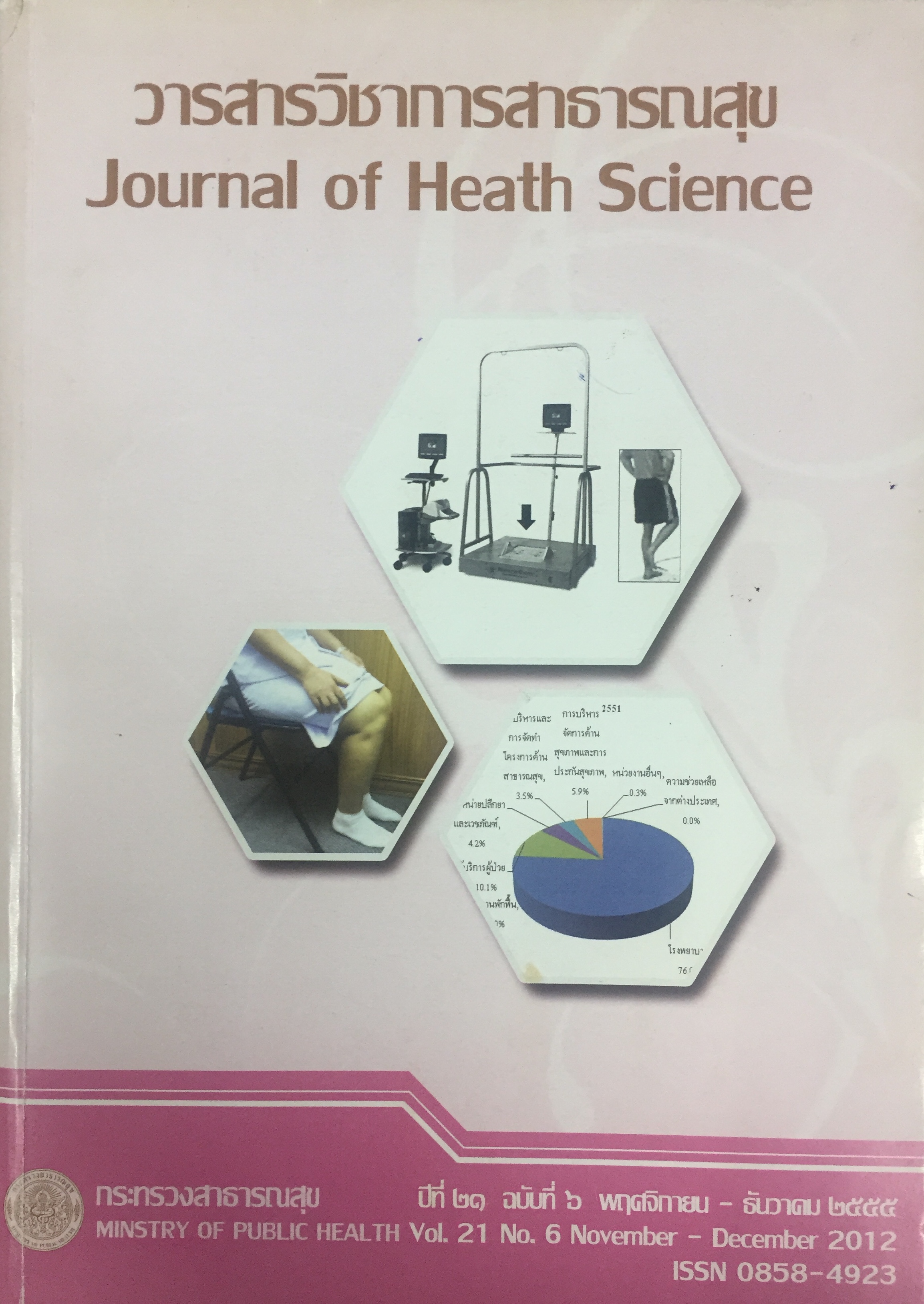Thai National Health Accounts Part 1 Thai Health Expenditure 1994-2008 Part 1 Thai health expenditure 1994-2008
Keywords:
National Health Account, health expenditure, financing source, healthcare function, healthcareproviderAbstract
International Health Policy Program, Ministry of Public Health, 1 National Economic andSocial Development Board, the Office of the Prime Minister, 2 Bureau of Policy and Strategy,Ministry of Public Health, 3 The Comptroller General’s Department, Ministry of Finance, 4 Na-tional Health Security Office, 5 Social Security Office, Ministry of Labour,6 National StatisticalOffice of Thailand, Ministry of Information, Communication and Technology, 7 State EnterprisePolicy Office, Ministry of Finance 8
This report provided a systematic analysis of Thailand health expenditure from 1994 to 2008to updates the series of the National Health Accounts (NHA) and to strengthen the national capacityin term of procedure and methodology of conducting NHA. Thai NHA was classified by types offinancing sources, health care functions and health care providers following the Organization ofEconomic Co-operation Development (OECD) System of Health Accounts (OECD SHA) in orderto be consistent with and comparable to other countries.
The result showed that total health expenditure (THE) in 2008 including capital formation ofThailand was 360 billion baht at current year prices increased from 128 billion baht in 1994 (2.8times). The ratio of THE to GDP was 3.5 percent in 1994 and reached 4.0 percent in 2008. THE percapita in 1994 at current year prices was 2,160 baht and, in 2008, increased over 15 years to 5,683baht. In 2008, the share of public financing sources was 76.0 percent of THE, after Universal HealthCare Coverage (UC) scheme was implemented in 2002. Since then the UC scheme became themajor financing agent in 2007. The non-government sources shared 24.0 percent of THE, of whichhousehold out-of-pocket payments contributed the major share of 14.5 percent of THE, and otherprivate sectors (e.g. private health insurance, traffic accidence insurance, non-profit institutions andprivate corporations) represented 9.3 percent of THE. The rest came from others of which foreignassistances played a minor role in the Thai NHA, accounting for of 0.3 percent of THE.
Thailand spent 80.5 percent of THE on personal medical services and goods but 5.6 percent onprevention in 2008. Hospital was the major health care provider and the personal health care servicewas the main function of care. In 2008, 258 billion baht, which accounted for 76.0 percent of thetotal recurrent expenditure on health, were spent on care provided by hospitals, which increasedfrom 132 billion baht or 68.7 percent in 2002-the first year of UC scheme
Downloads
Downloads
Published
How to Cite
Issue
Section
License
Copyright (c) 2017 Journal of Health Science- วารสารวิชาการสาธารณสุข

This work is licensed under a Creative Commons Attribution-NonCommercial-NoDerivatives 4.0 International License.



